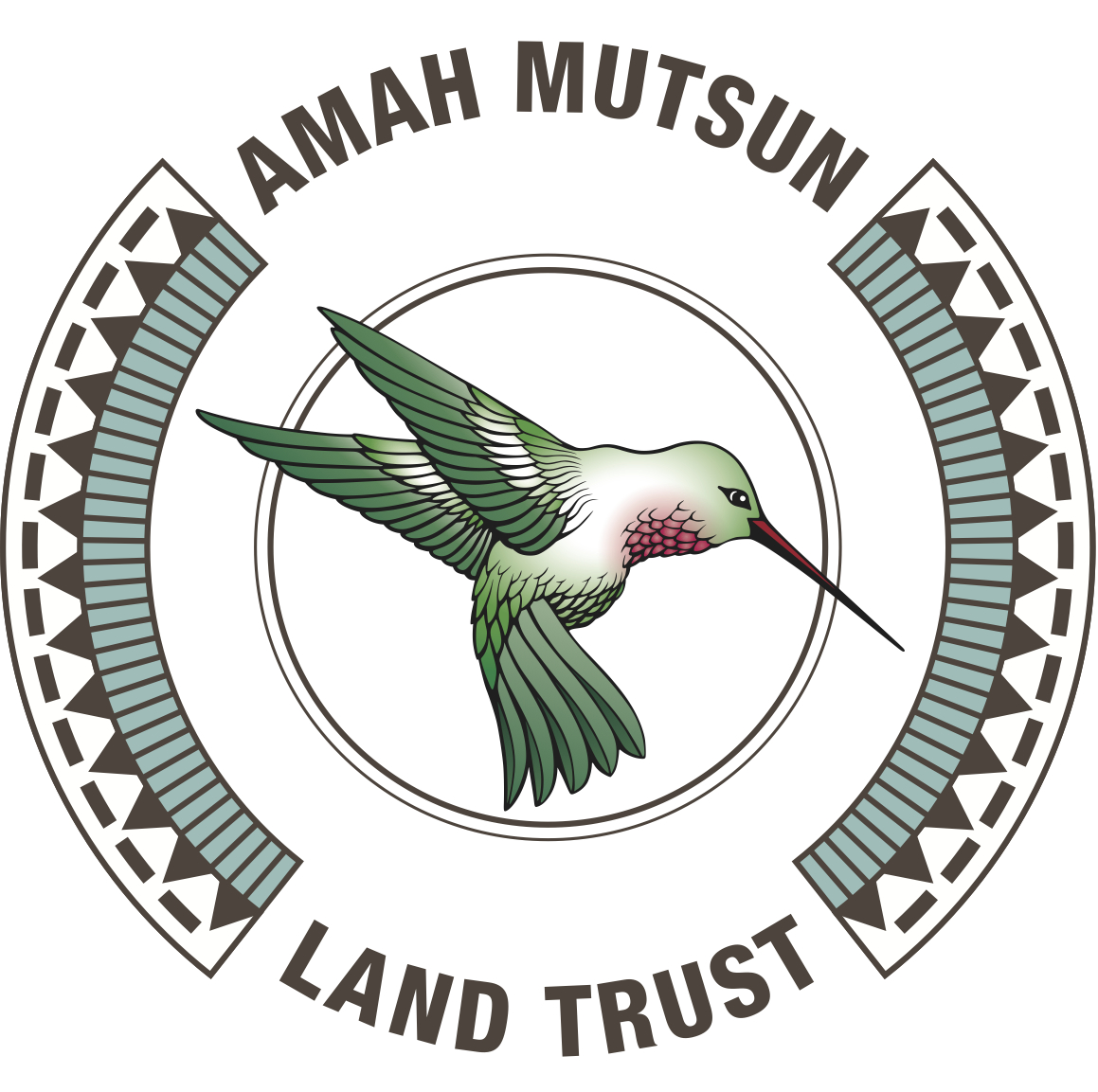Fall 2021 Newsletter
Removing Invasive Species and Trash at Liddell Creek, Cotoni-Coast Dairies
By Marcella Luna, AMLT NSC Administrative Specialist, & Rob Cuthrell, AMLT Research Associate.
Cotoni-Coast Dairies (CCD), part of the California Coastal National Monument, is a 5800-acre property in the vicinity of Davenport. The property is owned by the Bureau of Land Management (BLM), who have been working over the last few years to develop plans for long term management of the property. AMLT and BLM completed a Memorandum of Understanding in 2016 that described how the two organizations would work together to protect cultural resources on the property, develop educational opportunities about Indigenous history, and other activities. It is important to AMLT that the legacy of the historic Cotoni Tribe is recognized and protected at CCD.
NSC Staff working at CCD site. Photo credit Marcella Luna.
In 2019 and 2020, the AMLT Native Stewardship Corps conducted large scale “proactive and integrative” cultural resource survey at CCD in order to provide BLM with additional information to protect sensitive resources on the property. AMLT’s approach to cultural resource assessment is “proactive” because surveys are conducted before there is a regulatory requirement to do so, such as a development project. The assessment is also “integrative” because it identifies any resources on the property that are culturally significant to the Amah Mutsun Tribal Band which may require special protection, including stands of plants, landscape features, sacred sites, and others. BLM used the results of these surveys to guide their plans for management of the property.
NSC Staff working at CCD Site. Photo credit Marcella Luna.
AMLT surveys of the Cotoni-Coast Dairies property also revealed sensitive habitat areas that are threatened by exotic invasive species or that have been harmed by human impacts in other ways. One such area was the riparian forest along Liddell Creek. Near the southern end of Bonny Doon road, the forest along the creek has been heavily invaded by a few particularly harmful exotic plants: cape ivy (Delairea odorata), English ivy (Hedera helix), and greater periwinkle (Vinca major). For many years, people have dumped trash in this location, and there have also been problems with illegal camping. For Amah Mutsun Tribal Band, it is an imperative obligation and duty to begin working to protect such threatened places through stewardship. A long term goal is to protect such sites through invasive species control and trash cleanup.
After conducting initial surveys in this area, AMLT’s Native Stewardship Corps (NSC) members had been looking forward to beginning stewardship work to protect Liddell Creek. Starting in late August, the NSC conducted five days of work at the site supported by a grant from Conservation Lands Foundation. This work was also supported by BLM staff, and AMLT would like to thank the BLM Central Coast Field Office and Ranger Lee Thompson in particular for coordinating and participating in fieldwork, as well as for providing a trailer to transport and dispose of materials offsite.
To remove trash, the NSC used trash pickers and sharps containers to separate the general trash from recyclables and potentially hazardous items such as needles or broken glass. Various hand tools were used to cut into the blankets of well-established ivy that were taking over and choking out native plants such as willow and red elderberry. The Stewards worked methodically around and under downed logs and branches as well as living trees and shrubs in order to pull out these invasive species by the roots. By the end of the project, the NSC had removed about six tons of invasive plants. As the invasive plants carpeting the area were removed, trash that had been dumped years ago was revealed underneath. An exotic mud snail from New Zealand has also been observed in Liddell Creek, and the NSC implemented special protocols to avoid spreading this invasive species to other locations.
NSC staff working at CCD Site. Photo credit Marcella Luna.
AMLT NSC Administrative Specialist Marcella Luna shared her thoughts about the importance of this project:
Doing this type of work is very meaningful and rewarding for me. It teaches me how to care for Mother Earth and builds a spiritual connection with these places. It is ethical to care for the lands. It can be emotional to see the native plants and trees that have been suffering from the overload of trash and invasive species. It was important to pick up every single piece of trash and to untwine the vines from the trees, which left scars. I thought about how the NSC could tend some of these trees by pruning.
I was mindful of possible erosion especially along the creek after the invasive species were pulled out, which left the soil loose. This is something we will need to monitor. Perhaps we and others can help monitor this area for trespassing and trash dumping. I learned that we all need to work together for restoration efforts and to care for one another, and I will continue to share my knowledge to others. It is our hope that members of the public will become aware of and learn to protect these lands and Mother Earth. We need to work together so that the native plants and wildlife prosper, the soil heals, and invasive exotic plants and animal are controlled.
The invasive species that have taken over this part of Liddell Creek are difficult to eradicate, and AMLT anticipates that it will take repeated episodes of removal to control them. This initial project at Liddell Creek will help AMLT and BLM learn what it would take to control or eradicate these species elsewhere and on larger scales. AMLT is in the process of seeking grant funding to continue this important work next year.



